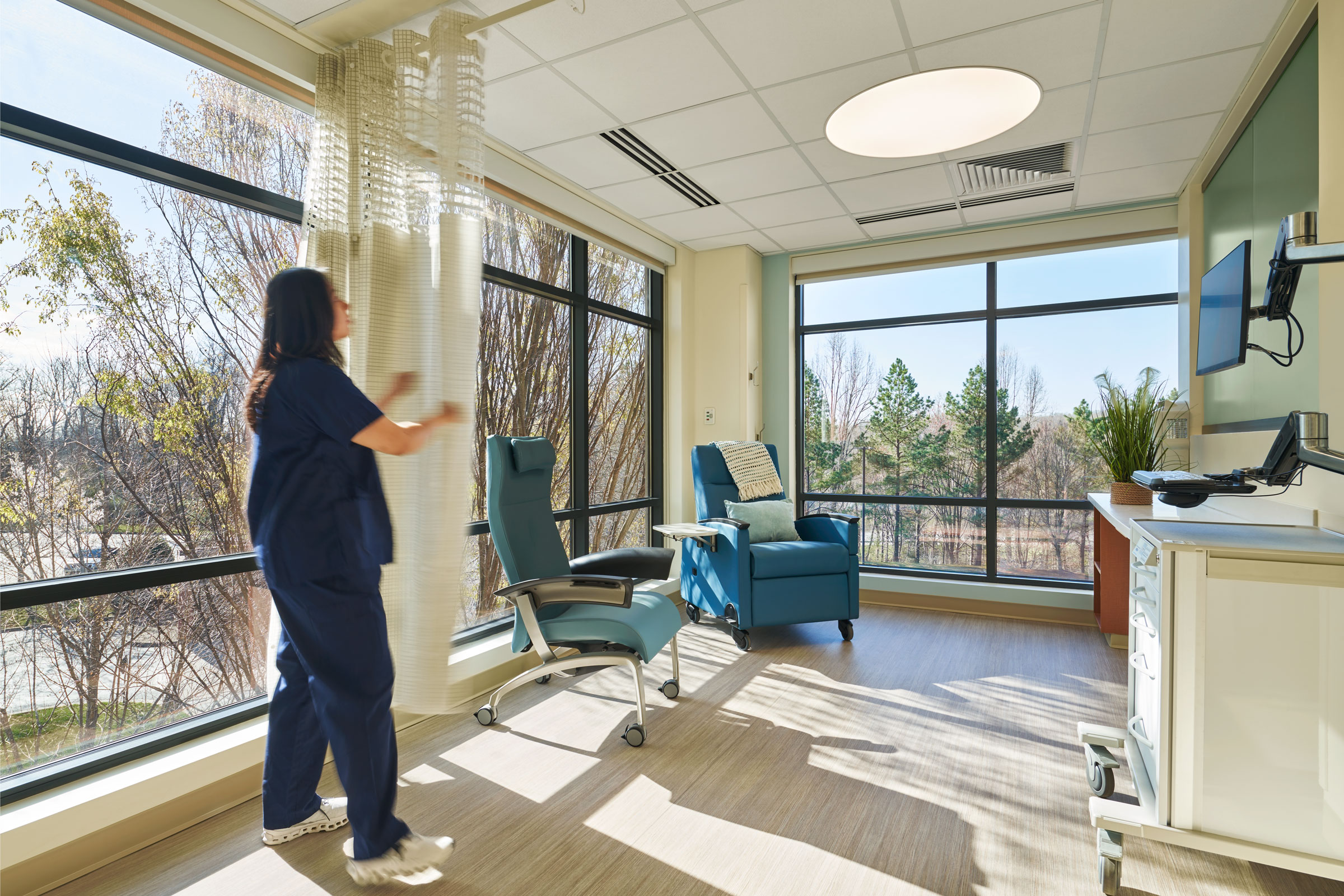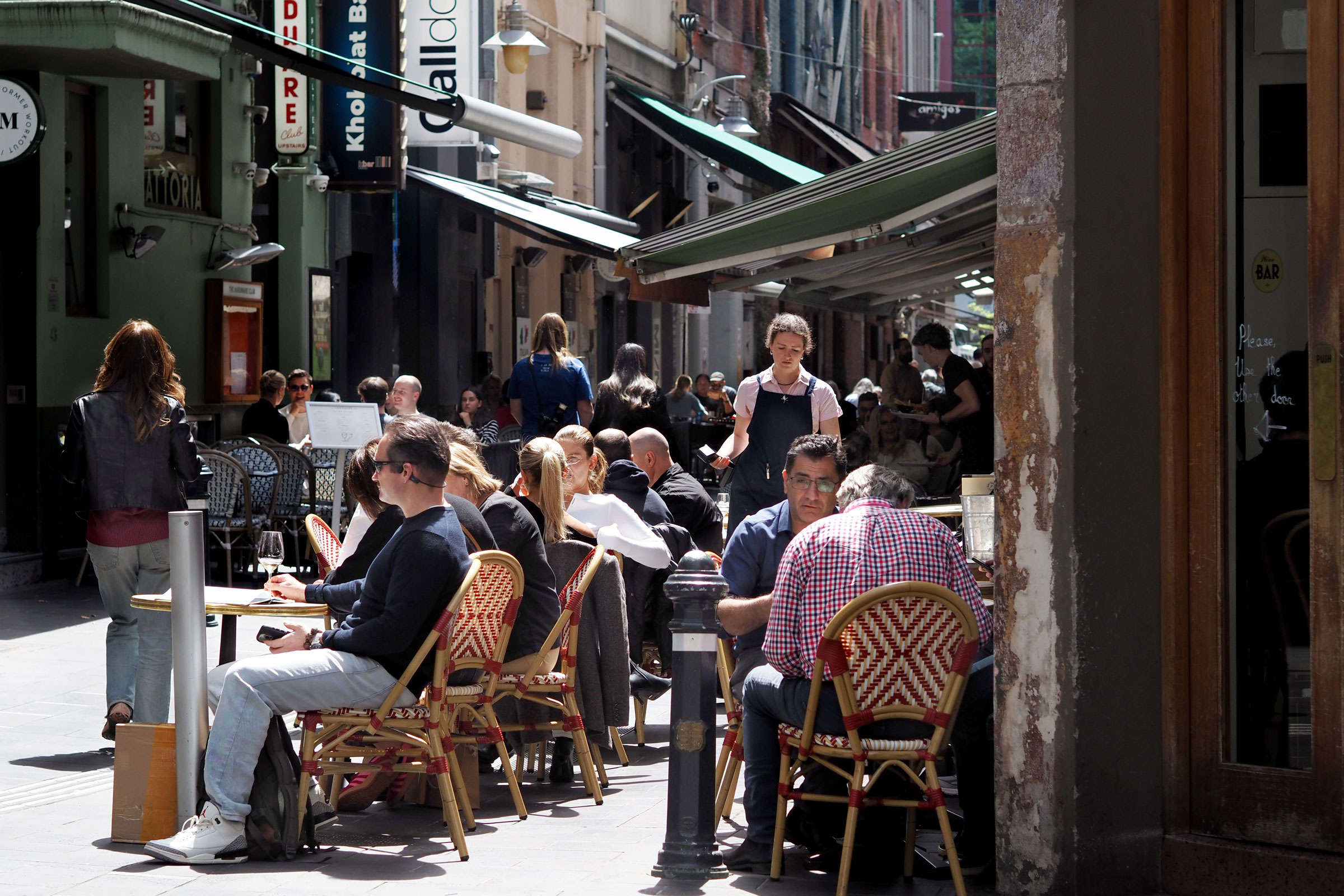Story at a glance:
- Health-care focused architecture firm Wilmot Sanz designed the UVA Health Cancer Care Pantops in Charlottesville with a strong emphasis on comfort, calm, and healing.
- Everything had to be easy to clean and stand up to the wear and tear common in a health care setting. The interior design of the Pantops facility also emphasized natural light and nature views.
Comfort and calm, healing and respite. That’s what Wilmot Sanz designed the UVA Health Cancer Care Pantops project in Charlottesville to achieve. From a thoughtful color palette and acoustic panels to durable, comfortable flooring and air purifying paint, the design team had patients, staff, and visitors in mind as part of every decision.
The wellness of patients and staff, as well as the materials that make up any space, are top priorities within the UVA health system, according to Amanda Ripley, associate principal at Wilmot Sanz and lead interior designer on the UVA Pantops project. “We’re always going through a thorough process to make sure we’re putting in a certain grade of product for health care spaces. That’s always at the forefront for them,” she says.
Materials Matter
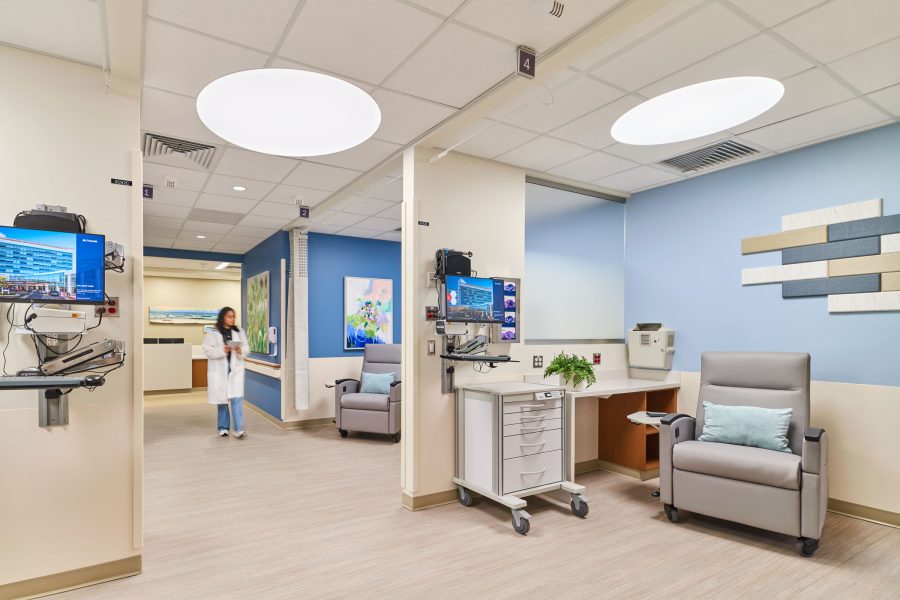
Every decision made was critical in this oncology project. “We already have a certain clientele coming in who need to have certain materials; we don’t want anything to be harmful,” Ripley says.
Everything from the paint—they used Sherwin-Williams SuperPaint with Air Purifying Technology—to the wall surfaces to the ceiling tiles to the floor was considered carefully. Everything had to be easy to clean and stand up to the wear and tear and frequent traffic seen in a health care setting. The interior design of the Pantops facility also emphasized natural light and views to nature with large windows offering views of the surrounding trees, helping to reduce stress and promote wellness.
“There are a lot of beautiful, natural views, and we wanted to make sure that all of the patients and visitors who came in had views to nature. We also wanted to bring a lot of natural light in,” Ripley says, noting that the center is in a more rural area. “We wanted to make sure, no matter if it was in an individual room or the shared infusion area, that everybody had that type of comforting space to be in as they receive treatment.”
Colorful acoustic wall panels from Carnegie also helped to bring art and life into the space, she says, while being easy to clean. Some patterns selected were inspired by nature, and all helped to improve acoustics while offering something pleasant to look at.
The panels were wipeable and incorporated tranquil colors, as carefully selected based on color therapy.
Design Research
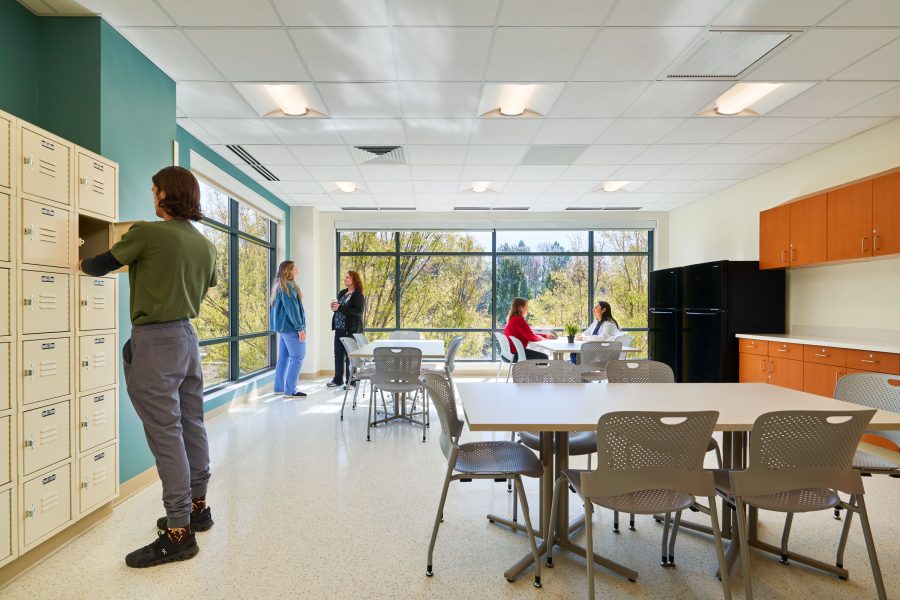
Transparent glass walls maintain openness without sacrificing separation, and local artwork provides interest and comfort. Photo by Edward Caruso Photography, courtesy of Wilmot Sanz
Ripley has been working with Wilmot Sanz for more than 10 years but wanted to work in health care design for as long as she can remember. Her mother and father both worked in health care, so she was around it a lot. “I felt like there was a need to improve this sector,” she says. “Then you go through life events and you see how you could make something better.”
Health care design is continually evolving, she says, but working at Wilmot Sanz—100% focused on health care—means she gets to work closely with a lot of patient advisory groups, end users, medical staff, and executive teams. “We’re very lucky that we have so much involvement and input into that,” she says.
The architecture firm spends a lot of time testing everything that goes into any health care facility it designs, including the furniture and the flooring, to ensure everything that goes into a space is right for the people in that space. They also study everything from workflow efficiency and indoor air quality to cleanability of products and durability of materials. “We want to make sure these spaces are good for everyone—environment and people,” Ripley says.
Wilmot Sanz works to select materials that are both durable but also inviting. “More hospitals are turning more toward the hospitality branding. We want things to feel more hospitality-like, more welcoming and not sterile. You don’t want to be here, but we want to make it feel welcoming and give you the best experience you can have during a difficult time.”
Ripley says Wilmot Sanz worked closely with the UVA team to make sure everything at the Pantops facility felt holistic, with no detail overlooked—from local, inspiring artwork to comfortable, flexible furniture.
“This is always the place no one wants to go,” she says of most hospital experiences. “It’s usually not a pleasant time, so we want to make it, from a wellness standpoint, very calming and welcoming and easy to navigate. We wanted to feel hopeful in this space.”
The Future of Health Care
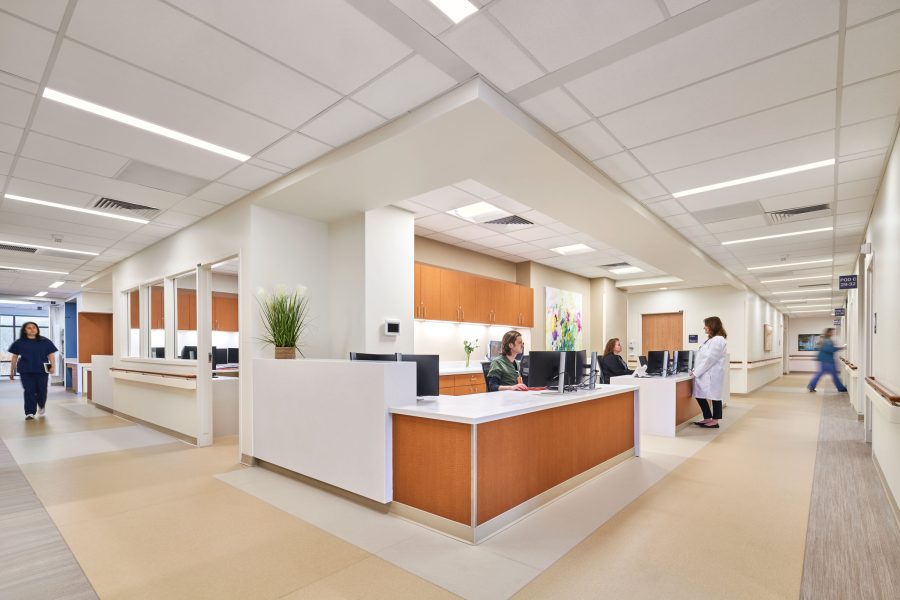
Resilient tile manufactured by American Biltrite is seen here in the reception and exam areas in Sonata Wood and Texas Granite. Photo by Edward Caruso Photography, courtesy of Wilmot Sanz
Ripley expects to see more extension centers and outpatient facilities similar to this one in the future. The demand is there. “A lot of people cannot travel. We’re seeing a lot more of this rural community care,” she says.
Flexible spaces and telehealth rooms are also growing in popularity, she says, as are combined buildings where both administrators and care are under one roof. “We’re seeing that there needs to be a lot more flexibility and adaptability in these spaces,” she says.

